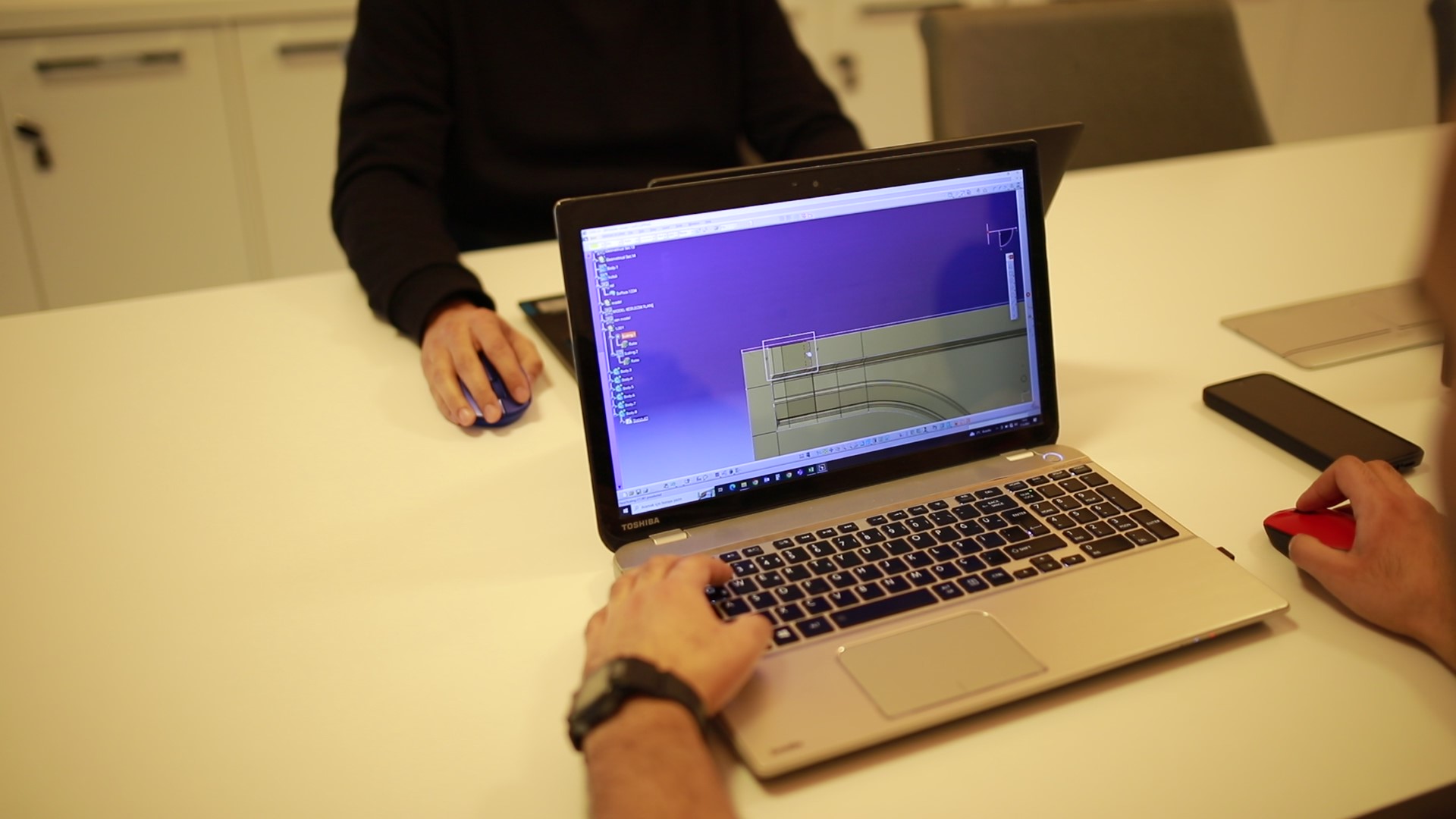Hand Lay-upHand lay-up is the simplest and oldest open molding method for composite manufacturing. First, the glass fiber is manually placed in the mold and the resin matrix; A brush is used to apply it on the reinforcing material. Then, evenly spreading of the wet composite into the mold is necessary to provide an enhanced interaction between the reinforcement and the matrix, facilitate uniform resin distribution, and achieve the required thickness. Finally, the parts are left to harden under standard atmospheric conditions.

Material derivatives that can be produced according to the production method:
All sizes of parts that are not affected by corrosion can be produced in all sectors such as automotive, train, yacht and boat. | PolyurethanePolyurethane refers to a class of polymers made up of organic units joined by urethane bonds. This material is unlikely to break or be damaged during use, making it an excellent candidate for composites that will be used over and over again. Its durability makes it easy to create complex shapes and use for more difficult conditions. Another advantage is that polyurethane cures quickly. Fast curing time also means you can produce more composite in less time than other methods.
Material derivatives that can be produced according to the production method:
|
RTMAlthough RTM (Resin Transfer Molding) has many sub-processes, the most used processes are Light RTM, Vacuum Assisted RTM and Hard RTM. These processes have been used successfully for many years in the production of glass fiber parts. It is a successful method for the manufacture of components made from glass fiber composites. In the RTM process; A reaction resin is poured onto dry and semi-finished fiber parts, and as a result these parts are dipped by applying pressure in a closed mold. Main production advantages; reduction of cycle time and repeatability at high volumes allowing complex parts to be molded.
Material derivatives that can be produced according to the production method:
All sizes of parts that are not affected by corrosion can be produced in all sectors such as automotive, train, yacht and boat. | SMCSMC (Sheet Molding Composite) is a type of reinforced polyester containing glass fiber or carbon fibers. Fibers that are typically 2.54 cm or thicker are suspended in a resin bath, and the desired parts are obtained by the pressure exerted on the molds by press machines with high pressure capacity. The combination of long fibers and robust resin produces a strong and cost-effective material. Material derivatives that can be produced according to the production method:
All small and medium sized parts that are not affected by corrosion can be produced in all manufacturing sectors such as automotive, train, yacht and boat. |
Thermoforming / ABSThermoforming is a composite manufacturing process that involves heating a thermoplastic sheet and shaping it into certain shapes using a mold. The shaped composite is then cooled and trimmed to result in the finished part. The process is performed using a thermoforming machine to heat and stretch the flexible thermoplastic sheet onto the mold.
Material derivatives that can be produced according to the production method:
| Thermoform CoatingOuter layers of organic or inorganic substances; It is the process of shaping using artificial thermoplastic materials under high pressure and with temperature. Material derivatives that can be produced according to the production method:
All products that can be shaped by hot forming can be produced by forming all thermoplastic parts on a rigid product under vacuum; rather, vehicle interior glove box and vehicle interior coatings are produced. |
EngineeringAs Polütek, we produce in line with the demands and requests of our customers, from design to modeling, from mold production to sample production and quality control of the final product, with our engineers and experts who are competent in their fields. In these processes, we aim for a problem-free production by using our technical and analytical knowledge and we continue to provide technical support to our customers after production.  | Mold Design and ProductionAll the mold production we need is done in our own factory and in this context;
 |
Trim RobotOTC DAIHEN robot with a diameter of 3600mm in 6 axes is used in all our parts in order to ensure a faultless cut.
| Dye HouseWith our dye houses and ovens in our production facilities; We make the parts we produce ready for use by making primer, paint and topcoat paints in line with customer demands.
|
High Composite TechnologyThe design and production of parts to be used in areas requiring high strength required in the defense industry are carried out.
| Special Polyester3D models and their production are provided that will bring to life all geometry and product designs that cannot be made with classical materials and methods. Among them;
|
BMCHot Press Molding Dough (BMC) is formed by combining glass fiber, resin and filling materials by kneading. The most important point in BMC Dough; It is to provide the features that will comply with the demands in the finished product application and provide the best performance at the most affordable cost.
| IZO RIMIZO RIM is a closed and hot molding method in which pre-cut or pre-shaped reinforcement materials are placed between the male and female mold and sealed. Resin and its derivatives are pressed into the mold by injection method under pressure. Application pressures It is possible to apply in a range from 1 Bar to 25 Bar. Izo Rim is an alternative molding method to the RTM process of medium-sized parts. It is a fast production process between RTM and SMC, which does not have high mold costs like SMC. As it provides a faster production opportunity compared to the RTM method; It is a process that facilitates the printing of high-viscosity resins. In this way, it makes it possible to produce more qualified products by enabling the use of special resins.
|